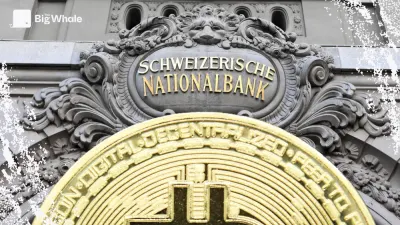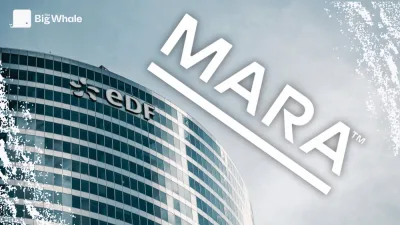TBW - TEE: a new security tool for blockchain and AI

Long confined to sensitive infrastructures, Trusted Execution Environments (TEEs) are now emerging as a key component of confidentiality and security strategies applied to blockchain and artificial intelligence.
In the crypto ecosystem, these secure enclaves are being mobilised to protect the construction of blocks, reinforce the confidentiality of transactions and secure layer 2 solutions. On the AI side, they ensure the integrity of calculations and the protection of data, major imperatives for the processing of sensitive information and the reliability of results.
Despite past criticism of their vulnerability to hardware attacks, TEEs are now enjoying renewed interest. New approaches, integrating these environments into hybrid architectures combining several layers of protection, make it possible to maximise their effectiveness while reducing the risks. A strategic shift that could accelerate their adoption in sectors where trust and security are paramount.
The foundations and architecture of TEES
TEES are emerging as an essential building block of modern security architectures. These secure enclaves, integrated within processors, make it possible to execute code and process sensitive data in an isolated manner, thus guaranteeing their confidentiality and integrity, even in the event of the operating system being compromised.
The major advantage of TEEs lies in their ability to ensure that code is executed in a tamper-proof manner, while attesting to its authenticity. This approach prevents malicious manipulation and protects sensitive information from unauthorised access.
The main benefits of TEEs:
- Confidentiality and integrity: Data processed within a TEE remains inaccessible to the rest of the system, reducing the risk of leakage.
- Secure execution: Critical code can be executed without risk of tampering, guaranteeing reliable calculations.
- Optimised performance: Unlike purely cryptographic solutions such as Fully Homomorphic Encryption (FHE) or Zero-Knowledge Proofs (ZKP), TEEs offer reduced latency and simpler implementation.
A perfectible security model
However, these environments are not without their limitations. Their effectiveness depends on the reliability of the hardware, which implies a dependence on chip manufacturers and the guarantees they provide. Furthermore, while TEEs are robust against software attacks, they remain vulnerable to hardware attacks, particularly via the analysis of information leaks (side-channel attacks).
Thus, while they do not replace advanced cryptographic solutions, TEEs represent a strategic compromise between security, performance and ease of integration. A key advantage for applications requiring secure execution without the computational constraints of pure cryptographic techniques.
A new tool for securing block construction
Block construction is an essential link in the operation of blockchains: it is at this stage that transactions are selected, ordered and included in a new block. Its efficiency directly influences resistance to censorship and the way in which Maximal Extractable Value (MEV) is captured and redistributed.
👉 To understand the challenges of MEV, consult our dedicated dossier.
Integrating TEEs into this process offers additional guarantees in terms of confidentiality and security. These secure enclaves make it possible to protect transactions before they are executed, thereby guaranteeing the integrity of the block construction process. While TEEs are not infallible, their ability to temporarily secure critical data makes them a relevant solution for block production.
Flashbots, a pioneer in the use of TEE
The Flashbots group, which specialises in SRM-related infrastructures, has integrated TEE into several of its solutions:
- Buildernet aims to decentralise the construction of blocks on Ethereum by allowing different builders to collaborate while preserving the anonymity of transactions. This approach redistributes SRM to the users who generate it, rather than to validators.
- Rollup-Boost, designed for second-layer blockchains, exploits TEEs to ensure optimal transaction scheduling based on fees paid. This architecture makes it possible to develop new mechanisms such as the VEM tax, which gives applications the ability to recapture the VEM produced by their users in order to potentially redistribute it to them.
Another project, Trustless Orderflow Operations Layer (TOOL), developed by nuconstruct, relies on TEEs to offer guaranteed execution of transactions on Ethereum every second, even though the network produces a block every 12 seconds. An innovation that could considerably improve the user experience, particularly for trading, without requiring major changes to the Ethereum protocol.
A strategic reinforcement for the security of Ethereum's layers 2
TEEs are gradually finding their place in Ethereum's layers 2 ecosystem, where they can play a complementary role to cryptographic proofs. By offering attestation guarantees on the execution of code without alteration, these secure enclaves are similar, to some extent, to the validity proofs used by zk-rollups.
Faced with the challenges of trust and scalability, several rollups are exploring the integration of TEEs into hybrid architectures, combining several independent provers to validate transactions. This approach aims to enhance the robustness of rollup systems by diversifying verification mechanisms.
Major projects such as Scroll and Taiko have incorporated the use of TEEs into their roadmap for decentralising their infrastructures. Rather than a single security solution, TEEs are emerging as an additional layer of protection, making it possible to multiply guarantees without adding excessively to the cost or latency of verification.
Guaranteeing the autonomy and reliability of AI agents thanks to TEEs
In a context where AI agents make autonomous decisions, particularly when handling financial assets, the issue of trust becomes essential. TEEs then appear as a solution for proving that an artificial intelligence does indeed operate autonomously, without external intervention or alteration of its behaviour.
Several initiatives are exploiting TEEs to guarantee the integrity of decisions made by AI agents:
- Autonomous, a platform dedicated to the deployment of AI agents, relies on Automata's infrastructure to certify that its agents operate exclusively within a TEE, thus offering proof of their independence.
- Phala Network, for its part, is making available a cloud based on TEEs enabling other projects to launch verifiable AI agents, thus ensuring a secure and transparent framework for their interactions.
The adoption of TEEs in this field meets a dual requirement: guaranteeing that AI agents do indeed respect their initial programming and providing verifiable proof of their autonomy. This is an advance that could prove decisive for the development of autonomous AI in finance and other sensitive sectors.
Conclusion
EETs are emerging as a relevant solution for strengthening the security of systems requiring both high computing power and low latency. Their ability to offer additional protection in contexts where purely cryptographic approaches would be too cumbersome or ineffective makes them a key asset for many applications, particularly in blockchain and artificial intelligence.
Although fallible, TEEs remain particularly useful in cases where data protection only needs to be guaranteed for a limited time. On the other hand, their exclusive use to secure permissionless environments remains risky: physical access to the infrastructure can compromise their integrity.
It is precisely with this in mind that major projects such as Unichain, developed by Uniswap Labs, have chosen to integrate TEEs. Not as an absolute security solution, but as a complementary technological brick, capable of offering additional guarantees in scenarios where speed and confidentiality are paramount.
While TEEs do not replace cryptographic advances, they are establishing themselves as a pragmatic alternative, making it easier to secure interactions in increasingly complex decentralised architectures.



